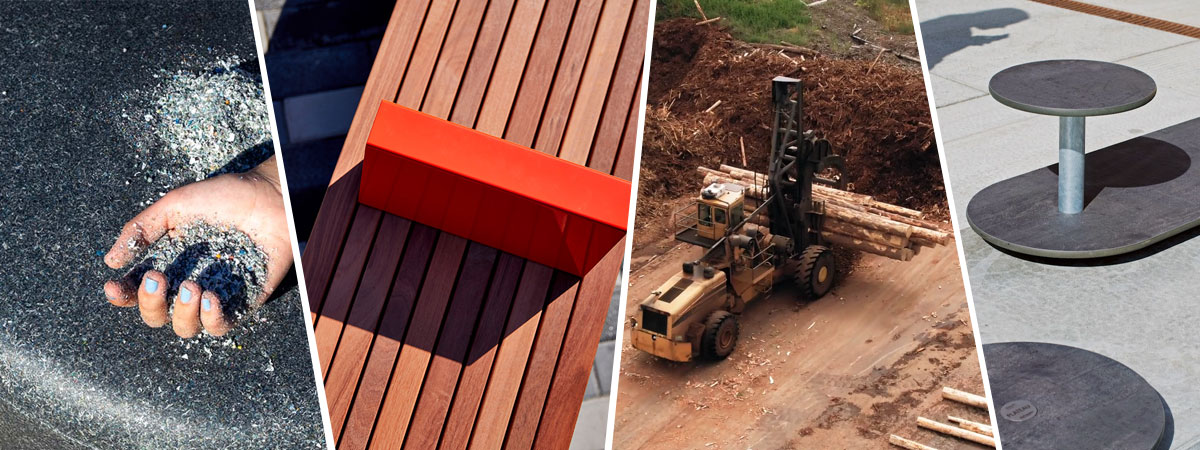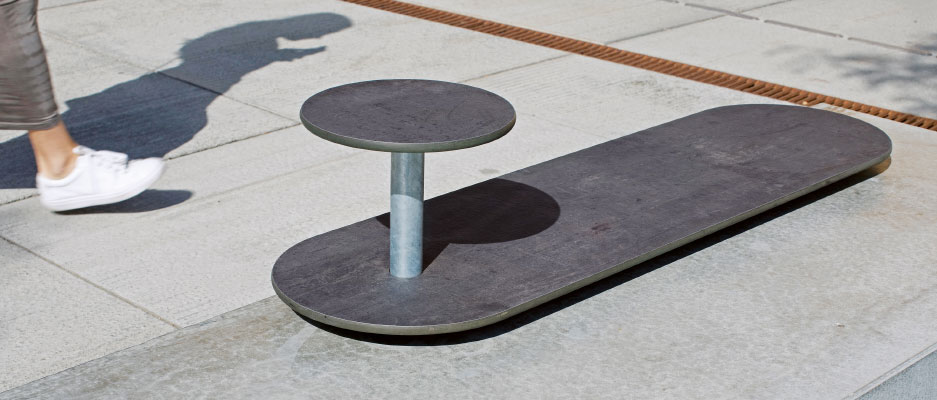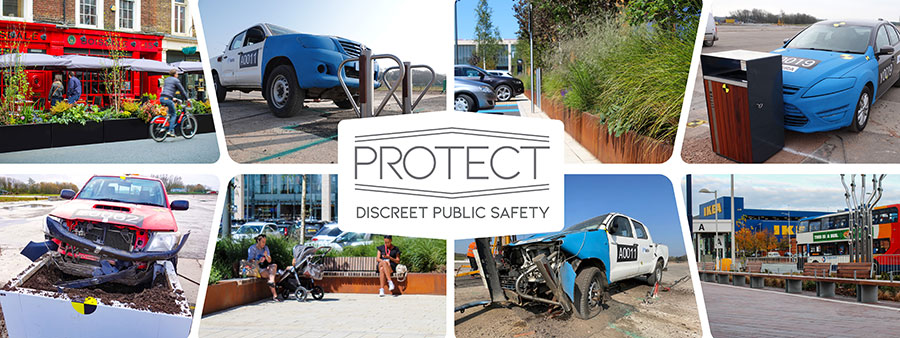The importance of Specification for Sustainability
Posted on 27th September 2022

The process of specifying street furniture can bring numerous benefits to a project from saving time and money to reducing environmental impact as well as upholding the aesthetic intention of a space.
We spoke to Ian Stevenson - Architectural Project Manager at BSFG to find out more about the specification process, from trends, the impact of economic and political factors, to how specification can benefit the sustainability of a project.
“Street Furniture specification provides a clear and concise description that comes from the design brief from client discussions as to what products are going to be needed on the project.”
A specification will clearly outline often complicated details like dimensions, materials, and fixings of a product to ensure that design drawings are not overloaded with unnecessary information. It will form part of the contract information not only from the tender stage to construction but also when the documents are audited once the project has been completed.
“By having this clear transition of information from one stage of the project through to the next is that it should theoretically promote efficiency and therefore save time and money and the project.”
How specification can contribute to the sustainability of a project
Sustainability is multidimensional and covers many areas – it is an ever-present factor across all disciplines and particularly at the forefront in the construction sector. In order for a development to meet targets such as BREEAM, considerations for sustainability will need to be incorporated at the earliest stages of the specification process.
The choice of materials plays a large role in this – manufacturers are continually developing new processes using renewable or recycled materials to ensure that environmental impact is reduced.
Manufacturers Out-sider have been at the forefront of sustainable street furniture as Ian reveals the Danish group has been awarded a Nordic Swan Eco-Label for the Loop product range which can now be manufactured using 100% recycled content.
Having access to details on the sustainability of a product is also helpful -
“One of our partners, Landscape forms provide sustainability documents for each and every product that they offer.”
Landscape Forms have a huge product offering for urban realm - the readily available sustainability details will help determine which products are to be used and provide crucial information for the specification.
Additionally, the values and credentials of a supplier can support sustainability targets. Being aware of how sustainable the manufacturing process is is important;
“Metalco only uses 100% certified sustainable energy and they achieve that through seven and a half thousand solar panels on top of the factories.”

By utilising renewable energy, manufacturers Metalco can reassure specifiers that their comprehensive but high-quality range of street furniture is meeting green targets from the outset.
“This is all part and parcel of the specification process. It’s how much of a carbon impact the development is going to have”
Trends in specification
Trends are constantly evolving in the world of street furniture, however, there are certain areas that remain a constant;
“Colour, in particular, is one thing that is fairly regular RAL 7016 has been the main colour that has been specified over the years, but probably the main trend I’ve seen is in relation to the sourcing of timbers and particularly hardwood timbers”
Hardwood Timber is the most popular choice of material that is used in the construction of street furniture for a number of reasons from durability to aesthetics, but as suppliers, we are becoming more and more conscious of the ethical use of hardwood.
“One element that I think is often misunderstood is how sustainable hardwood timbers are…they take a long time to grow to get to a point of maturity where they can be actually logged.”
Specifiers will be aware of the Forest Stewardship Council (FSC) who are the gold standard as far as sourcing of timber is concerned - FSC does a lot of work in the active management of where timbers are sourced from and make sure there is no sort of illegal logging used in the supply chain. Even so, hardwoods and specifically tropical hardwoods are simply not a truly sustainable option.
Alternatives are to be considered such as softwoods which is a far more sustainable option as it grows faster and therefore easier to replenish. Although this comes with its downsides, softwoods are not as durable so will have a shorter lifespan as street furniture.
Manufacturers are constantly looking at alternatives that achieve that natural quality of timber as well as longevity such as thermal modification, a process that increases the durability and stability of wood by using steam and high temperatures and then cooling and conditioning.

Other alternatives that are becoming more and more popular are composite materials like HPL (High-Pressure Laminate);
“We also use High-Pressure Laminate which is manufactured using a by-product from production using paper mulch that has been compressed with a resin to create a very hard-wearing timber substitute”
Looking further forward there are steps toward the future of timber alternatives from highly renewable sources as Ian states;
“Further to that, there’s the next generation of materials that we’re looking at - such as hemp wood which is very sustainable, or even bamboo which is actually a grass but grows very quickly - those are the sort of materials that we’ll be looking to use in the future as alternatives to hardwoods.”
Once they are more readily available these materials are going to have a significant impact on the specification of street furniture and the construction sector as a whole.
Specification across various Sectors
Although there are not vast differences in the specification of street furniture between sectors the level of budget between projects will influence the products that are specified.
“We tend to find the more commercial projects such as high-end residential projects demand a certain finish quality on their project compared to a local authority or school projects who have a limited budget.”
An increasingly important development across all sectors is the impending introduction of Protect Duty which comes in the wake of a number of terrorist attacks in public spaces across the UK – most notably, the Manchester Arena bombing. This new legislation once in place will put the onus on businesses, land owners, and designers to improve security in public spaces, protecting and enhancing the safety of both visitors and staff.

Landscape architects are to take this into consideration at the early stages of designing or updating spaces. Ensuring that spaces do not become steel fortresses but instead include a more sympathetic approach to promote a healthy and accessible environment.
“As a result of the Protect Duty, BSFG has developed the Protect Range, a complete suite of products that have been crash-tested which includes everything from planters to litter bins to cycle parking and seating which are designed to give a sense of space and place rather than a ring of steel from bollards.”
How the economy and political climate affect the specification process
After the ongoing uncertainty of Brexit, an unprecedented global pandemic, to the recent devastating war in Ukraine, it has certainly been a difficult few years.
“We thought that there might be some light at the end of the tunnel post covid but then the devastating war in Ukraine has had a massive impact… and whilst it's not necessarily affecting specifications, certainly, for current projects, budgets are being constrained quite badly.”
RIBA’s (The Royal Institute of British Architects) most recent ‘Future Trends Report’ reveals that cost inflation coupled with extreme shortages of materials is leading to delays across the board. With Ukraine and Russia being two of the world’s largest steel exporters, the supply chain has been struggling.
“street furniture is something that has come under immense pressure in the last 12 to 18 months. For example, some of our steel suppliers are only holding their prices for 24-48 hours. So when we produce quotes they are now only valid for seven days now where previously they were up to 30 days - it all puts real pressure on the full supply chain.”
Wooden construction could offer an alternative to steel if there was the political will to make a change. A shift in thinking could also benefit much of Europe and ease their reliance on Russian energy and resources.
Interestingly the Finnish government in a bid to be independent of Russia has recently set a goal of 45% of public construction using wood rather than steel by 2025.
Further to this, FSC has taken action in support of Ukraine
“A positive step by the FSC recently - their international board of directors made a decision that they would not supply or source any of their FSC-approved timber from either Russia or Belarus until such time that the conflict in Ukraine has ended.”
Factors that contribute to a specification not being followed
Street furniture brings many benefits to an urban environment and is often the first thing that people will see when they visit a new space, however, it can often be one of the last considerations in a project. With increasing costs and uncertain economic climates ahead the specification for street furniture is often not held up due to budget constraints.
“The street furniture package is always one of the last things to be procured and installed and as a result, any unexpected cost that has been incurred by the contractor during the build process restricts the overall budget which as a result puts additional pressure on the street furniture package”
Another factor at play is that the street furniture package is relatively small in the grand scheme of the construction project and can often be miscalculated in the budget where provisional sums rather than having confirmed prices from the specification have been used.
So undoubtedly cost is the main factor in specifications not being held up.
There are always unpredictable external factors that can affect the outcome of a project. Having appropriate guidance and information at the specification stage can help to foresee and avoid potential budget issues.
As part of the Bailey Street Furniture Group, Artform Urban Furniture has years of experience in specifying for urban environments we are able to draw on innovation and expertise from across the globe with an extensive range of award-winning and unique street furniture.
For more information about specification contact our team on 01625 322888 or email enquiries@bsfg.co.uk.








